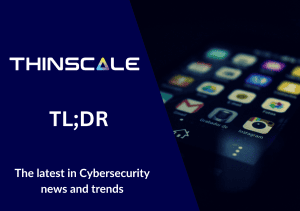In this week’s TL;DR article, we look at phishing scammers, both imitating the DeepSeek platform and utilizing AI to increase their own capabilities.
DeepSeek phishing scams
In the wake of DeepSeek’s recent release of its AI chatbot on January 20, 2025, cybercriminals have swiftly exploited its rising popularity by creating fraudulent websites that mimic DeepSeek’s official platform. These phishing sites are designed to deceive users into downloading malicious software or disclosing sensitive information. Researchers from Israel-based cybersecurity firm Memcyco have identified at least 16 active sites impersonating DeepSeek.
These malicious actors exhibit a high degree of adaptability, frequently updating their domains and content to mirror DeepSeek’s online presence. Some phishing sites dynamically adjust their branding and attack methods in real-time, to enhance their deceptive effectiveness.
The primary risks to users engaging with these fraudulent sites include identity theft, financial fraud, and ,in some cases, malware infections. Certain sites can intercept login credentials in real-time, facilitating immediate account takeovers. Others distribute malware granting remote access to users’ devices, compromising personal and corporate data. These threats are particularly perilous during the launch of new and highly anticipated tools like DeepSeek, as users may not yet be familiar with the official website or platform, making them more susceptible to deception.
The rapid emergence of these phishing sites underscores the importance of vigilance among users. Prompt action should also be undertaken from hosting providers and domain registrars to mitigate such threats.
DeepSeek scams TL;DR
Cybercriminals are using fake DeepSeek sites to steal user data and deploy malware. These phishing sites intercept credentials, target crypto wallets, and adapt quickly to evade detection. Users should verify website authenticity and stay cautious of unsolicited requests.
AI use in social engineering
AI is revolutionizing social engineering attacks, making them more convincing and difficult to detect. Traditionally, scammers used basic impersonation tactics, but AI-powered deepfakes and voice cloning have taken deception to a new level. So attackers can generate realistic video deepfakes to impersonate executives and manipulate employees into authorizing fraudulent transactions. (see our article on AI-driven cybercrime for more information.) These sophisticated methods have already led to major financial losses in corporate environments.
Voice phishing, or “vishing,” has also become more advanced, with AI-generated voice cloning allowing attackers to replicate someone’s voice from just a few seconds of audio. This has enabled scammers to trick victims into believing they are communicating with trusted colleagues. Additionally, AI-powered phishing emails are now highly personalized, making them harder to identify as scams.
The increasing use of AI in social engineering poses a major cybersecurity risk. Organizations must strengthen authentication protocols, implement AI-detection tools, and, most importantly, train employees to recognize sophisticated scams. Multi-factor authentication, employee restriction policies, and verification procedures can help mitigate the risks.
AI phishing TL;DR
AI-driven social engineering uses deepfakes, voice cloning, and personalized phishing to deceive victims. Attackers impersonate executives, replicate voices, and craft convincing emails for fraud. Stronger authentication, AI detection, and employee training are crucial to counter these threats.
Protect yourself from phishing attacks
These stories solidify phishing as one of the most prevalent and effective methods for malicious actors to harvest data. Cybercriminals actively employ new trends and technologies to steal user and corporate data. The best method against these increasingly sophisticated is restriction and awareness. Get in touch to learn how ThinScale can help with the former.



